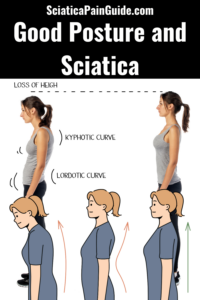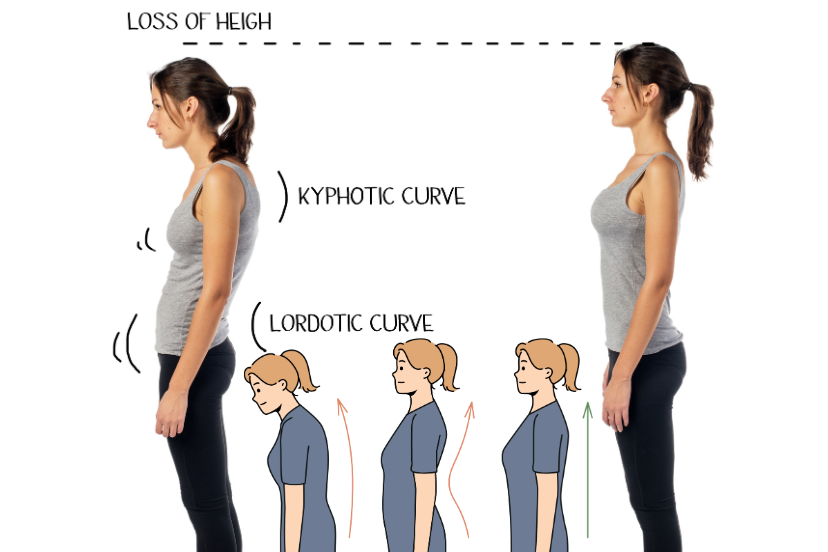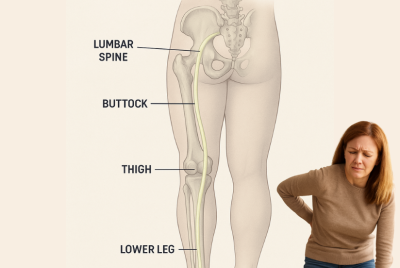Good Posture and Sciatica
Good posture and sciatica. Discover how good posture impacts sciatica relief. Learn tips and exercises to alleviate your pain. Dive in now! As someone passionate about sciatica health and eager to provide helpful suggestions, I understand the significant impact it can have on daily life. Through my journey and research, I’ve discovered the crucial role of good posture in preventing and managing sciatica. So here is my comprehensive guide to prevention and relief. In this article, I’ll share insights, tips, and advice to help you improve your posture and alleviate sciatic pain effectively.
Introduction to Good Posture and Sciatica
Sciatica is a condition characterized by pain that radiates along the path of the sciatic nerve, which branches from your lower back through your hips and buttocks and down each leg. It’s often caused by compression or irritation of the sciatic nerve, leading to symptoms such as sharp pain, numbness, tingling, and weakness in the affected leg.
Understanding Sciatica
Definition and Causes
Sciatica can be caused by various factors, including herniated discs, spinal stenosis, degenerative disc disease, or even muscle imbalances. Understanding the underlying cause is essential for effective management.
Sciatica Symptoms
Recognizing the symptoms of sciatica is crucial for early intervention and treatment. These may include shooting pain down the leg, numbness or tingling, weakness, and difficulty moving the leg or foot.
The Importance of Good Posture in Preventing Sciatica
Maintaining good posture is vital for preventing sciatica and reducing the risk of exacerbating existing symptoms. Poor posture can contribute to spinal misalignment, increased pressure on the sciatic nerve, and muscle imbalances, all of which can worsen sciatic pain.
Home Exercises to Fix Your Posture
Tips for Maintaining a Good Posture
Ergonomic Workspace Setup
Proper ergonomics at work can significantly impact posture and reduce the risk of developing or worsening sciatica. Adjust your chair height and desk height, and monitor position to maintain neutral spine alignment.
Proper Sitting and Standing Techniques
- Whether sitting at a desk or standing, pay attention to your posture.
- Sit with your feet flat on the floor, knees at hip level, and back supported.
- When standing, distribute your weight evenly and avoid slouching or arching your back.
Regular Stretching and Strengthening Exercises
Incorporate stretching and strengthening exercises into your daily routine to improve flexibility, muscle strength, and posture. Focus on exercises that target the core, back, hips, and legs to support the spine and alleviate pressure on the sciatic nerve.
Using Supportive Tools and Devices
Lumbar Support Pillows
Consider using lumbar support pillows or cushions to maintain the natural curvature of your lower back while sitting. These can help alleviate pressure on the lumbar spine and reduce the risk of sciatic nerve compression.
Posture Correctors
Posture correctors or braces can provide additional support and help train your muscles to maintain proper alignment. However, they should be used in conjunction with strengthening exercises to address the root cause of poor posture.
Standing Desks
Alternating between sitting and standing throughout the day can relieve pressure on the spine and promote better posture. Invest in a standing desk or use a standing desk converter to customize your workspace.
Incorporating Movement Into Daily Routine
Importance of Regular Breaks
Take frequent breaks from prolonged sitting or standing to stretch and move around. Set reminders to get up and walk around, perform gentle stretches, or engage in light physical activity throughout the day.
Exercise and Physical Activity Recommendations
Incorporate low-impact exercises such as walking, swimming, or cycling into your routine to strengthen muscles, improve flexibility, and support spinal health. Aim for at least 30 minutes of moderate exercise most days of the week.
Sleeping Positions for Sciatica Relief
Best Sleeping Positions
Experiment with different sleeping positions to find what works best for you. Sleeping on your back with a pillow under your knees or on your side with a pillow between your legs can help maintain spinal alignment and alleviate pressure on the sciatic nerve.
Pillows and Mattresses
Invest in a supportive mattress and pillows that promote proper spinal alignment and relieve pressure points. Memory foam or latex mattresses are often recommended for individuals with sciatica.
Managing Stress and Mental Health
Connection Between Stress and Sciatica
Chronic stress can exacerbate sciatic pain by tensing muscles and increasing inflammation. Implement stress-relief techniques such as deep breathing, meditation, yoga, or mindfulness to promote relaxation and reduce tension.
Stress-Relief Techniques
Find activities that help you unwind and de-stress, whether it’s spending time outdoors, practicing hobbies, or connecting with loved ones. Prioritize self-care to support both your physical and mental well-being.
Seeking Professional Help
Physical Therapy
A physical therapist can develop a personalized exercise program to address muscle imbalances, improve posture, and alleviate sciatic pain. They may also use techniques such as manual therapy, stretching, and modalities to promote healing.
Chiropractic Care
Chiropractic adjustments can help realign the spine, relieve pressure on the sciatic nerve, and improve overall spinal health. Consult with a qualified chiropractor to determine if this treatment approach is suitable for you.
Medical Intervention
In severe cases of sciatica or when conservative treatments fail to provide relief, medical intervention may be necessary. This may include corticosteroid injections, nerve blocks, or surgery to alleviate pressure on the sciatic nerve.
FAQs Related to Good Posture and Sciatica
Can poor posture really cause sciatica?
Yes, poor posture can indeed cause sciatica. When posture is compromised, it can lead to misalignment of the spine, which in turn can put pressure on the sciatic nerve. This pressure can result in symptoms such as pain, numbness, tingling, and weakness along the path of the sciatic nerve, exacerbating or even causing sciatica. Maintaining good posture is crucial for preventing this condition.
Are there specific exercises that can help relieve sciatic pain?
Yes, there are specific exercises targeted at relieving sciatic pain. Strengthening exercises for the core, back, hips, and legs, along with stretching routines, can alleviate pressure on the sciatic nerve and promote healing. These exercises aim to improve flexibility, muscle strength, and posture, ultimately reducing the severity and frequency of sciatic pain episodes.
How long does it take to see improvements in sciatica symptoms with posture correction?
The timeline for improvement in sciatica symptoms with posture correction varies. Some individuals may experience relief within weeks, while others may take longer. Consistent adherence to posture correction techniques, along with factors such as overall health and severity of symptoms, influences the speed of improvement. Regular monitoring and adjustments may be necessary.
Is chiropractic care safe for treating sciatica?
Yes, chiropractic care can be safe and effective for treating sciatica. When performed by a qualified and experienced chiropractor, adjustments and manual therapies can help realign the spine, alleviate pressure on the sciatic nerve, and improve overall spinal health. However, individual suitability should be assessed by a healthcare provider.
Can stress really worsen sciatic pain?
Yes, chronic stress can exacerbate sciatic pain. Stress triggers muscle tension and inflammation, which can increase pressure on the sciatic nerve, intensifying pain and discomfort. Managing stress through relaxation techniques, mindfulness practices, and stress-reducing activities can help alleviate tension in the muscles and mitigate the impact of stress on sciatic pain.
Good Posture and Sciatica – Conclusion
In conclusion, prioritizing good posture is paramount in the prevention and management of sciatica. By maintaining proper spinal alignment, individuals can alleviate pressure on the sciatic nerve and reduce the likelihood of experiencing debilitating symptoms. Incorporating ergonomic principles, regular exercise routines, supportive tools, stress management techniques, and seeking professional assistance when necessary are all integral components of a comprehensive approach to sciatica care. With diligence and dedication to fostering healthy posture habits, individuals can significantly improve their quality of life and minimize the impact of sciatic pain on daily activities.
Disclaimer
Please note that the information provided in this article is for informational purposes only and should not replace professional medical advice. If you’re experiencing sciatica pain or any health concerns, it’s advisable to consult a healthcare professional for proper diagnosis and treatment.






